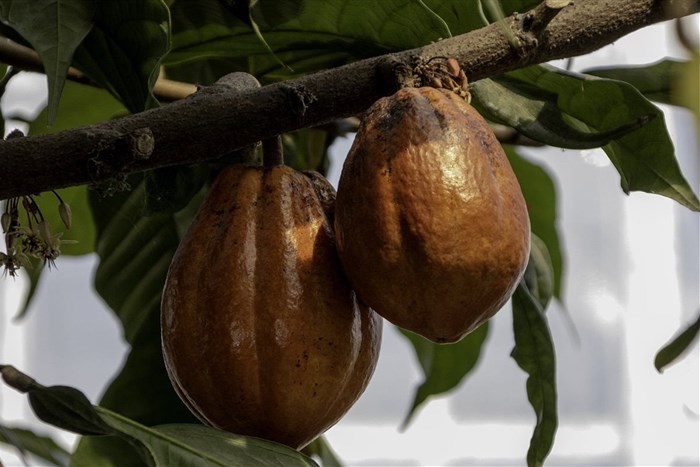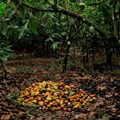The price surge could prove to be a critical moment for cocoa farming and policy in West Africa.
The cocoa-producing belt of West Africa is responsible for generating over 80% of the total global output. Between them, Ghana and Côte d'Ivoire contribute more than 60% to the global output. Ghana is the second-biggest producer in the world and cocoa is a vital component of the country’s economy.
The global price spike has led West African governments to increase the guaranteed producer prices to farmers. Ghana recently raised the state-guaranteed cocoa price paid to farmers by two thirds. The announcement means that Ghana’s cocoa farmers will be paid 20,943 cedis (US$1,837) per tonne for the upcoming 2023-2024 season, up from 12,800 cedis.
Marcelo Teixeira 19 Jul 2023
Cameroon, the world’s fourth-largest cocoa producer, raised the price cocoa farmers get to 1,500 CFA francs (US$2.50) per kilogram, a 25% jump from the previous rate of 1,200 CFA francs. This increase is even more significant than Ghana’s when factoring in Cameroon’s single-digit inflation. Additionally, the Cote d'Ivoire government has announced a rise in the producer price.
As an economics researcher who has extensively studied and written about cocoa production in west Africa, I contend that the recent shortages can be harnessed to strengthen the position of cocoa producers. This will enable them to address the structural challenges ingrained in the cocoa production value chain. Rising production costs have not been recognised in the value of cocoa beans. Farmers therefore haven’t been able to earn enough income and this has led to unsustainable farming practices.
In my view, west African countries should use the cocoa shortage as negotiating leverage against multinational corporations to address these structural issues. Both Ghana and Côte d'Ivoire must recognise this pivotal moment. They must take the lead, and frame the current production challenges as deep-seated structural problems requiring solutions, rather than as short-term issues.
What’s driving the change?
Ghana’s cocoa regulator recently indicated that its farmers might not be able to meet some cocoa contract obligations for another season. Ghana’s projected cocoa yield for the 2022/23 planting season was the lowest in 13 years, falling 24% short of the initial estimates of 850,000 metric tonnes.
This trend has been repeated across the region, with production falling in Côte d'Ivoire and Cameroon.
Reduced output means demand can’t be met and global prices rise.
The reduction in cocoa output is attributed to short-term and long-term factors.
Commentators typically emphasise the short-term factors:
- Poor weather conditions
- Black pod disease, which causes cocoa pods to rot
- The decline in the number of cocoa farmers, some of them selling their land to illegal miners
- A shortage of fertilisers and pesticides, especially since the conflict in Ukraine has curtailed Russia’s export of potash and other fertilisers.
A number of long-term structural issues have beset cocoa farming in West Africa for decades. They shouldn’t be overshadowed by concerns with short-term problems.
The first is the declining availability of forest land and its connection to increasing production costs.
Over the last two decades, depletion of forest land has led farmers to turn to grasslands for replanting cocoa plants. This requires extensive land preparation, regular weeding around the cocoa trees, pruning, and the application of fertilisers and pesticides. What’s more, the plants are highly susceptible to disease. All these things result in increased labour costs.
None of these additional burdens have been incorporated into the pricing for sustainable cocoa production. In light of the new cost structure, cocoa beans have been undervalued for decades. Farmers have become poorer and are exploring alternative sources of livelihood.
The cost of sustainably cultivating cocoa in grasslands must be reflected in the price that farmers receive. Relying solely on market forces will not achieve this. For instance, every year, typically in September, the Ghana Cocoa Board announces the official producer price for cocoa beans for the upcoming cocoa season on behalf of the government. This official price is based on the anticipated export market price, with an understanding in Ghana that farmers should receive approximately 70% of it. However, the resulting market price, and consequently the producer price derived from it, often falls short of covering the costs of sustainable cocoa cultivation.
A path forward
What would it cost for cocoa farmers to cultivate cocoa beans sustainably, and ensure a living income, without contributing to deforestation or resorting to child labour?
If the market price falls below this cost (which isn’t static), then the farmers face exploitation, giving rise to many of the problems that plague the industry.
A few years ago, Ghana and Côte d'Ivoire pioneered the introduction of the “living income differential” – a premium that cocoa buyers would pay on top of the market price to ensure that farmers earned a sustainable income from their produce. Despite its noble intent, the initiative faltered. It was not well thought through. And it came at a time when these countries had diminished bargaining clout in a saturated market. Now is a favourable moment.
The crisis in the sector puts cocoa producers in a stronger negotiating position.
Ghana and Côte d'Ivoire could collaborate with other regional countries, such as Nigeria and Cameroon, to negotiate a better position for their cocoa farmers, ensuring sustainable cultivation. There are many strategies these countries can explore, including supply management (such as buffer stocks, export controls, or quotas), price premiums and value addition.
This article is republished from The Conversation under a Creative Commons license. Read the original article.






























